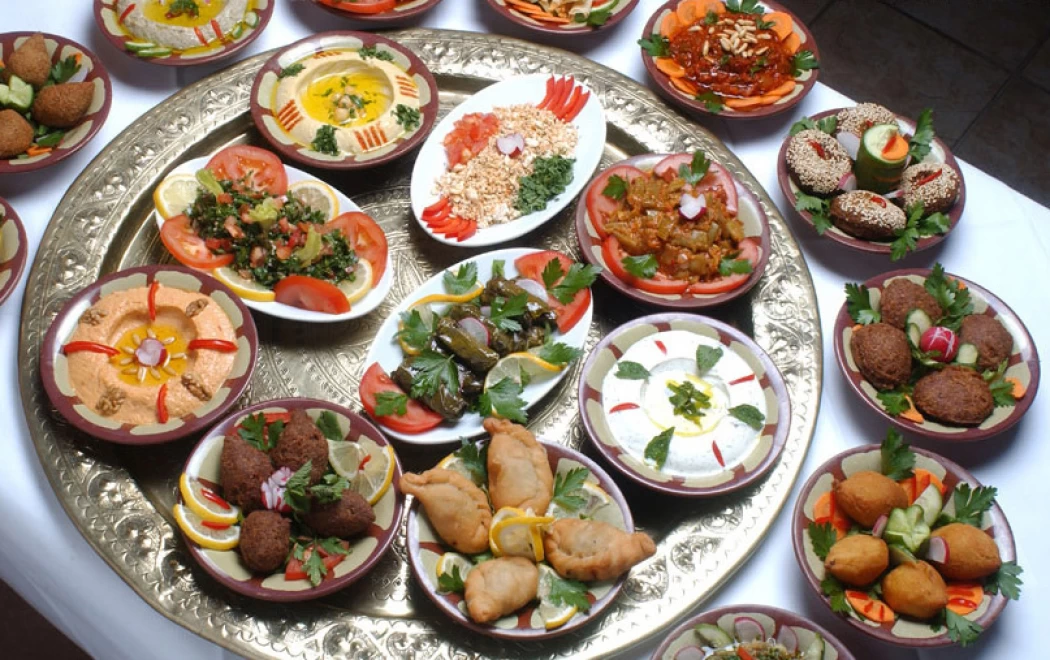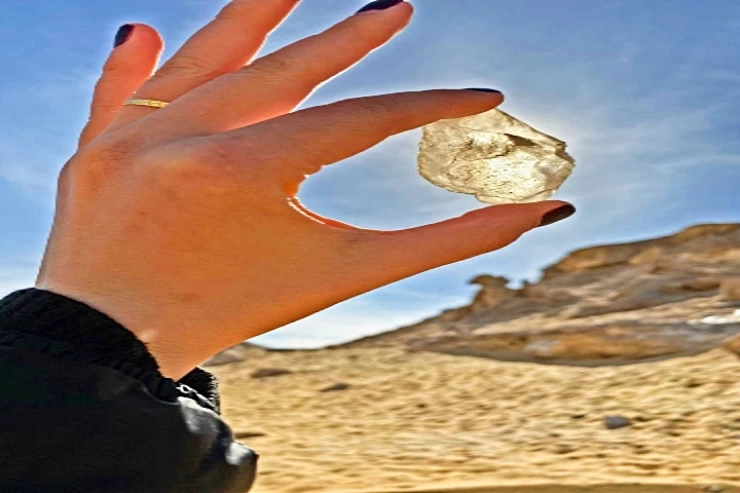
埃及菜
埃及美食的烹饪探险:历史和美食在一个自助餐
每个国家都有其来自时间,文化,地理等的特色和食谱,埃及在这个顺序上并不是一个异常。 埃及的饮食文化已经存在并繁荣了数千年,他们的烹饪实践可能构成了最简单的天然成分,但它们一直都是丰富而美味的。 无论是在开罗的街头市场上旋转,在尼罗河边用餐时似乎比任何帝国的美食都更具异国情调,还是在埃及的一个村庄里品尝亲戚的家常菜,你都能在埃及的烹饪体验中找到新的、令人兴奋的口味和菜肴组合,这也是令人惊叹的景点的所在地。
我们可以从法老安装的第一个埃及面包烤箱开始,来到今天的厨房。 这只表明埃及食品是非常传统的,但在同一时间采取了很多来自意大利,中东,非洲和其他地方。 现在让我们为探索做好准备-更确切地说是烹饪探索-并检查埃及独特的特色,典型的美食和饮食的作用。
历史盛宴:埃及美食的起源
埃及的食物历史可以追溯到法老的时代。 这是因为古埃及人在农业中发挥了很大的作用,沿着尼罗河畔种植小麦,大麦,蔬菜和水果,这是非常肥沃的。 面包的制作对人们来说是不可或缺的,学习烤面包是埃及最古老的烹饪方法之一。 在古墓画和象形文字上,展示了由面包,鱼,肉,水果和啤酒组成的完整宴会的图像,这表明了古埃及食物的意义。
古往今来,由于几个世纪以来的许多因素,埃及的烹饪艺术发生了变化。 例如,希腊人,罗马人和包括奥斯曼人和阿拉伯人在内的许多其他文明在这些变化中发挥了作用。 每个文明都以这样或那样的方式做出了贡献,带来了新的草药、烹饪方法和食物元素,这些元素与该地区的民族文化融合在一起,形成了我们现在所拥有的有效而美味的菜肴。
埃及菜的主要成分
埃及的美食的特点是使用简单和健康的成分,其中大部分是在埃及本身生产的。 以下是埃及烹饪实践的核心要素:
蚕豆(ful):蚕豆是埃及最受欢迎的食材之一,具有完整的特色,另一种传统菜肴,其中蚕豆炖,taameya或埃及沙拉三明治。
面包(Aish Baladi):在每个埃及餐中,都包括面包。 最熟悉的被称为aish baladi,这是一种圆形大饼,由比皮塔饼稍厚的全麦面粉制成,并广泛使用。 它用于舀食物,包裹食物,并与许多其他菜肴。
米饭:在埃及文化中,米饭通常作为配菜,通常是像秋葵汤,烤盘或装满其他成分和香料的菜肴的特殊菜肴。
扁豆:扁豆脉冲很受欢迎,经常用于许多埃及盘子;例如,这些包括汤,炖菜和犹太洁食。
草药和香料:主要原因之一是大部分食物也充满了温暖和世俗的恩惠。 因此,新鲜的草药,如香菜,欧芹,莳萝,以及孜然,大蒜,肉桂和姜黄等香料经常被添加到烹饪中。
Molokhia:来自埃及的另一个典型的最爱是molokhia,它来自一种绿叶植物,具有温暖和粘糊糊的质地,作为garlicky汤,与米饭或面包一起食用。
您必须尝试的标志性埃及菜肴
在埃及悠久的历史中,存在着一系列彼此截然不同的埃及菜肴。 厚厚的丰盛炖菜,油炸街头小吃和提供温暖的含糖甜点-每个人都有一些东西。 以下是一些代表埃及饮食文化的主要菜肴:
1. Ful Medames:埃及的国菜
Ful medames,或farinaceous粥,因为它是更好地知道,是一种美味,丰富的食物,由调味,慢煮的蚕豆与橄榄油,柠檬,大蒜和小茴香组成。 通常它是采取早餐与额外的健康食品,如新鲜面包和鸡蛋和一些其他蔬菜,如番茄,洋葱和黄瓜。 作为埃及民族食品,它受到居民的高度赞赏,显然对于游客来说,它是一道必吃的菜。 这种简单而美味的食物已经成为烹饪历史的一部分很多代人,甚至从法老的统治。
2. Taameya:埃及沙拉三明治
在全球范围内被称为felafel,taameya是这种流行的街头食品的埃及等价物。 埃及版taameya的独特之处在于使用蚕豆代替鹰嘴豆来制备比其他更轻,更轻,更蓬松的球。 清淡,脆脆,油炸的金黄色油条用香草—香菜和欧芹调味-通常夹在芝麻酱,沙拉和泡菜之间。 Taameya可以作为零食食用或作为膳食食用,对于任何尝试它的人来说,它都很难抗拒。
3. 犹太:街头食品之王
埃及最受欢迎的街头食品是kosher。 意思是"混合物",无论这种主食类型存在的地方,舒适都是自然的。 Koshari由米饭,扁豆,通心粉和鹰嘴豆组成,再配上美味的浓郁番茄酱以及脆脆的炸洋葱和辛辣的大蒜醋。 由于其填充特性和低廉的价格,这种富含碳水化合物的食物吸引了所有阶层的每个埃及公民。 虽然犹太洁食以简单便宜的配料而自豪,但这道菜的味道和质地复杂,而且调味很丰富。
4. 莫洛克希亚:绿色的,华丽的喜悦
最早让埃及游客措手不及的食物体验之一是一种奇怪的美味和质感的菜肴,叫做Molokhia。 这道菜由煮熟的mookhia叶(即黄麻叶)组成,与大蒜和香菜混合制成可食用的绿色糊状物。 这道菜通常与米饭或称为Aish baladi(埃及面包)的菜肴一起食用,有时与鸡肉,兔子或牛肉一起食用。 这道菜的黏糊糊的感觉可能需要一些时间来适应,但它在埃及人中是一个珍贵的菜,因为它带来的舒适与菜肴的味道,这是没有正常化。
5. Mahshi:酿蔬菜
Mahshi是一个常见的术语,用于塞入蔬菜中的浇头,如西葫芦,辣椒或葡萄叶,其中含有大米,香料,有时还有肉类。 馅料是西红柿,洋葱和所有香料的中心,这导致了这道菜的丰富而有趣的味道。 Mahshi经常在假期和派对上烹饪,因为花费了时间和精力来烹饪它。 这道菜由嫩软的蔬菜组成,每一口都充满了芳香的米饭,使它成为一个完美的美味舒适的食物回到埃及。
6. 法塔赫:节日盛宴
Fatet,位于盘子的中间,是一个庆祝拼盘放在一起只有在罕见的场合,如婚礼派对或宗教庆典。 它由酥脆的油炸面包块,米饭和炖肉组成,全部浸在醋和大蒜酱中。 当这道菜充满肉汤时,上菜和吃的方式会发生变化,从而形成一个丰盛而丰富的菜,充满了一个人的胃。 在埃及的传统中,法塔赫意味着丰富和茶点,因此在节日和家庭聚会等场合提供和品尝。
7. Hawawshi:埃及肉馅饼
Ful medames是埃及流行的街头食品,由煮熟的蚕豆制成,用橄榄油,盐和孜然调味。 Hawawshi可以被认为是埃及版本的肉馅饼。 地面,五香和煮熟的肉,通常与蔬菜结合,几乎总是含有草药,存在于皮塔饼和烤箱烤的口袋里。 最终产品是一个非常华丽,美味,潮湿的填充精美包裹在一个脆皮。 Hawawshi作为街头小吃深受许多人的喜爱,是匆忙吃零食或快速午餐的理想选择。
甜蜜的快乐:埃及甜点
任何对埃及美食的探索都不会被认为是没有品尝到最甜蜜的部分。 埃及糖果重而丰富,富含坚果,蜂蜜和香料。 以下是在这个国家发现的一些着名的糖果:
Basbousa:用杏仁或椰子装饰的糖浆蛋糕。 在埃及,这种甜的,潮湿的蛋糕是庆祝活动的象征,它几乎在所有的功能。
Konafa:坚果,奶油或奶酪的瘟疫馅料,令人望而却步地变甜,并在蛋糕中分层,由非常薄的小鸡糕点卷成滑线。 在许多阿拉伯国家,konafa在斋月和其他节日期间供应。
Om Ali:由腌制和烘烤的phyllo面团和牛奶与坚果,葡萄干和香料层制成的埃及布丁。 这种丰富而丰盛的甜点通常在家庭聚会和文化活动等节日场合准备
埃及茶文化:一口传统
Shai是埃及生活各个方面最喜欢的饮料之一,在聚会中更是如此。 这是典型的埃及人消费茶没有牛奶,加糖,或用一点薄荷调味。 在许多埃及人的情况下,茶不仅仅是另一种饮料,而是一种复杂的文化方面,因为它代表了热情好客和放松,特别是在饱餐一顿后或与朋友进行社交活动 除了茶之外,Karkadeh,在英语中可以被称为芙蓉茶,是埃及另一种深受赞赏的饮料,其特点是令人难以置信的红色和美味的酸味。
食物在埃及的文化意义
食物在埃及的传统中占有重要地位,不仅仅是作为食物的来源,而且是一个统一的因素。 人们很容易观察到有规律的饮食和节日的盛宴;在这种情况下,烹饪的目的是分享,讲述故事,并在不同年龄段教授技巧。 在埃及,热情好客受到高度重视,为朋友提供膳食被视为关怀和尊重的标志。
从小贩兜售嘴唇咂嘴的ful和kosher碗到周末布置的宴会,埃及的食物是一种存在,也是遗产和人民的源泉。
Culinary Expeditions in Egyptian Food: History and Gastronomy in One Buffet
Each nation has its specialties and recipes that draw from time, culture, geography, and so on, and Egypt is not an anomaly in that order. Egyptian food culture has existed and flourished for thousands of years, and their culinary practices may constitute the simplest of natural ingredients, but they have always been rich and flavorful. Whether swirling through the street markets of Cairo, having seemed more exotic than any empire’s cuisine while dining by the Nile, or tucking into the home-cooked food of relatives in a village in Egypt, one finds the thrill of finding new and exciting combinations of flavors and cuisines in the Egyptian culinary experience, which is also home to wondrous sights.
We can begin from the very first Egyptian bread ovens installed by the Pharaohs and come to the kitchens of today. This only goes to show that Egyptian food is very traditional but at the same time takes in a lot from Italy, the Middle East, Africa, and other places. Now let’s get ready for exploration—culinary exploration to be more exact—and examine the unique features, typical cuisine, and role of eating in Egypt.
A Historical Feast: The Origins of Egyptian Cuisine
The history of food in Egypt dates back to the Pharaoh's time. This is because ancient Egyptians played a great role in agriculture, growing wheat, barley, vegetables, and fruits along the banks of the Nile, which was very fertile. The making of bread was integral to the people, and learning to bake bread is among the oldest culinary practices in Egypt. On tomb paintings and hieroglyphs, images of an intact banquet consisting of bread, fish, meat, fruits, and beer are illustrated, which indicates the significance of food in ancient Egypt.
Throughout the ages, Egypt’s culinary art has changed due to many factors over the centuries. For instance, the Greeks, the Romans, and many other civilizations including the Ottomans and Arabs had a role in these changes. Each civilization made contributions in one way or another, bringing along new herbs, cooking methods, and food elements that fused with the ethnic culture of the region to give rise to the effective and delicious cuisine that we have nowadays.
The cuisine of Egypt is characterized by the use of uncomplicated and healthy ingredients, most of which are produced in Egypt itself. Here are some of the main elements that are central to the practice of cooking in Egypt:
Fava beans (ful): Fava beans are one of the most popular ingredients in Egypt, featuring in full, another traditional dish in which fava beans are stewed, and taameya, or Egyptian falafel.
Bread (Aish Baladi): In every Egyptian meal, there is bread included. The most familiar is called aish baladi, which is a circular flatbread made from whole wheat flour slightly thicker than pita and used extensively. It is used to scoop food, wrap around food, and with many other dishes.
Rice: In Egyptian culture, rice is often served as a side dish and is usually exceptional to dishes like gumbo, grilled dishes, or loaded up with other ingredients and spices.
Lentils: The lentil pulse is popular and often used in many Egyptian plates; for example, these include soups, stews, and kosher.
Herbs and spices: One of the main reasons is that most of the food is also full of warm and earthly favors. So, fresh herbs like cilantro, parsley, dill, and spices like cumin, garlic, cinnamon, and turmeric are often added in cooking.
Molokhia: Another quintessential favorite from Egypt is molokhia, which is derived from a green leafy plant with a warm and gooey texture served as a garlicky soup and eaten with rice or bread.
Within Egypt's extensive history, there exists an array of Egyptian dishes that are quite distinct from one another. Thick hearty stews, deep-fried street snacks, and sugary desserts that provide warmth—there is something for everyone. Below are some of the primary dishes that typify the Egyptian food culture:
1. Ful Medames: The National Dish of Egypt
Ful medames, or farinaceous porridge, as it is better known, is a delicious, rich food consisting of seasoned, slow-cooked fava beans with olive oil, lemon, garlic, and cumin. Normally it is taken for breakfast with additional healthy foods such as fresh bread and eggs and some other vegetables like tomato, onion, and cucumber. Being Egyptian national food, it is highly appreciated by residents, and clearly for the tourists, it is a must-dish. This uncomplicated and delicious it has been part of culinary history for many generations, even from Pharaoh’s reign.
2. Taameya: Egyptian Falafel
Globally referred to as felafel, the taameya is the Egyptian equivalent of this popular street food. Unique to the Egyptian version of taameya is the use of fava beans instead of chickpeas to prepare also lighter, airier, and fluffier balls than the rest. Light, crispy, and deep-fried golden brown fritters flavored with herbs—coriander and parsley—would usually be sandwiched in between tahini, salad, and pickles. Taameya can be eaten as a snack or consumed as a meal, and it will prove hard to resist for anyone who tries it.
3. Koshari: The King of Street Food
The most popular street food in Egypt is kosher. Meaning “a mixture,” comfort comes naturally wherever this staple meal type exists. Koshari consists of rice, lentils, macaroni, and chickpeas, which are further topped with a delicious tangy tomato sauce as well as crunchy fried onions and spicy garlic vinegar. Due to its filling properties and inexpensive price, this carbohydrate-rich food entices every Egyptian citizen across all strata. Although kosher boasts simple and cheap ingredients, the dish is a complex jumble of flavor and texture and is highly seasoned.
4. Molokhia: A Green, Garlicky Delight
One of the first food experiences that leaves visitors to Egypt oftentimes unprepared is the strangely tasty and textured dish called Molokhia. The dish consists of cooked mookhia leaves (which are the jute leaves), blended with garlic and coriander to make an edible green paste. This dish is often served together with rice or a dish called aish baladi (Egyptian bread) and is sometimes eaten with chicken, rabbit, or beef. The slimy feel of the dish may take some getting used to, but it is a treasured dish among the Egyptians because of the comfort it brings along with the flavor of the dish, which is not normalized.
5. Mahshi: stuffed vegetables
Mahshi is a common term for toppings stuffed into vegetables such as zucchinis, peppers, or grape leaves that contain rice, spices, and sometimes meat. The stuffing is the center of having tomatoes, onions, and all the spices, which results in the rich and interesting taste of the dish. Mahshi is often cooked on holidays and parties due to the time and effort invested in cooking it. This dish consists of tender soft vegetables in every bite filled with aromatic rice, making it a perfect yummy comfort food back home in Egypt.
6. Fattah: A Festive Feast
Fatet, located in the middle of the plate, is a celebratory platter put together only on rare occasions, such as wedding parties or religious festivities. It consists of crisp, deep-fried bread pieces, rice, and stewed meat, all drenched in vinegar and garlic sauce. The way of serving and eating changes as the dish is filled with broth, resulting in a sumptuous and rich dish that fills one's stomach. In Egyptian traditions, Fattah connotes plenty and refreshment and is thus served and savored on occasions such as feasts and family get-togethers.
7. Hawawshi: Egyptian Meat Pie
Ful medames is a popular street food in Egypt made from boiled fava beans seasoned with olive oil, salt, and cumin. Hawawshi can be considered the Egyptian version of a meat pie. Ground, spiced, and cooked meat, often combined with vegetables and will almost always contain herbs, is present in a pocket of pita bread and oven-baked. The end product is a very sumptuous, tasty, and moist filling beautifully enveloped in a crisp crust. Hawawshi is well-loved by many as a street bite and is ideal for snacking in a hurry or for a quick lunch.
And no exploration of Egyptian gastronomy would be seen as if without having a taste out of its sweetest part. Egyptian sweets are heavy and rich, loaded with nuts, honey, and spices. Below are some of the famous confections found in the native country:
Basbousa: Syrup cake garnished with either almond or coconut. In Egypt, this sweet, moist cake is symbolic of festivities, and it is served in almost all functions.
Konafa: Pestilious stuffing of nuts, cream, or cheese, prohibitively sweetened and layered in a cake made of a very thin chick pastry rolled into slippery threads. In many Arabic countries, konafa is served during the holy month of Ramadan and other feasts.
Om Ali: Egyptian pudding made of layers of marinated and baked phyllo dough and milk with nuts, raisins, and spices. This rich and hearty dessert is usually prepared during festive occasions like family gatherings and cultural events.
Shai is among the beverages that are most enjoyed in various aspects of life in Egypt, more so in gatherings. It is typical for the Egyptians to consume tea without milk, sweetened with sugar, or flavored with a bit of mint. In the case of many Egyptians, tea is not just another drink but an intricate cultural aspect because it represents hospitality and relaxation, especially after a heavy meal or while engaged in social activities with friends. In addition to tea, Karkadeh, which can be referred to as hibiscus tea in English, is another beverage well appreciated in Egypt characterized by its unbelievable red color and a tasty sourness.


















